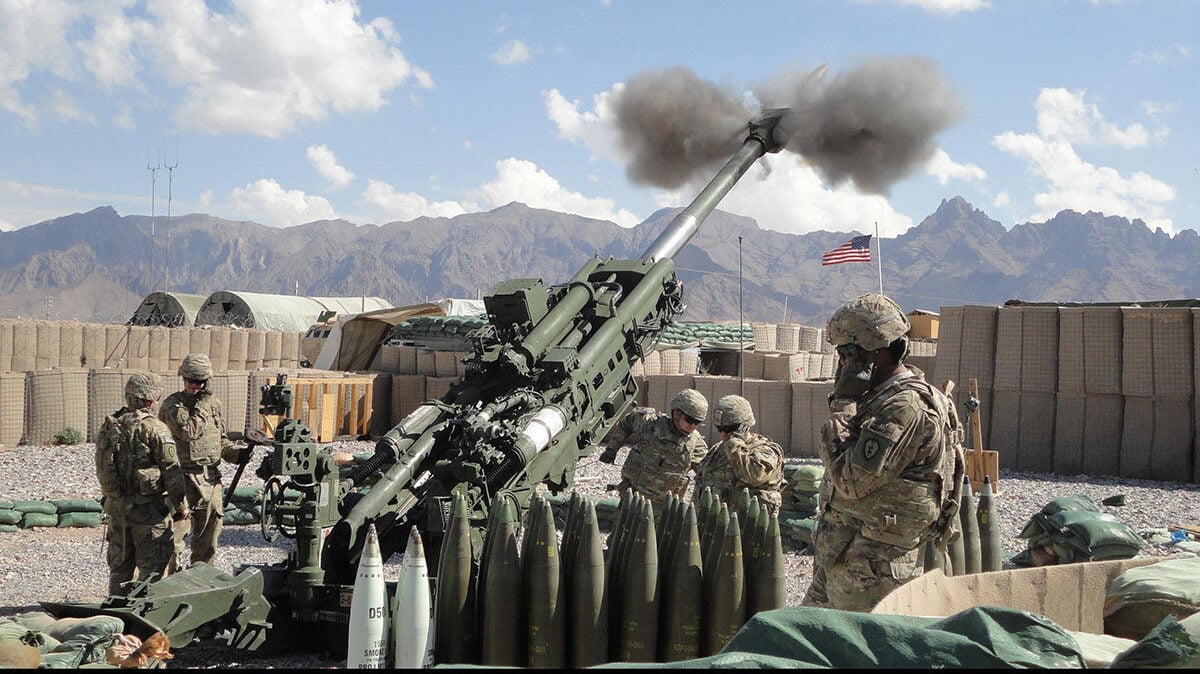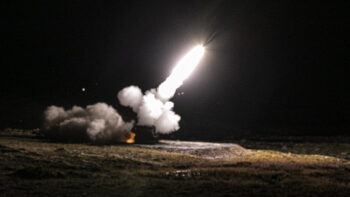
Soldiers fire a M777 in 2011. (Laura Buchta/US Army)
GLOBAL FORCE 2024 — US Army Futures Command head Gen. James Rainey today teased some details of the Army’s highly anticipated tactical fires study — and made it clear that towed artillery’s future isn’t bright.
“I personally believe that we have witnessed the end of the effectiveness of towed artillery: The future is not bright for towed artillery,” Rainey told an audience today at the Association of the US Army’s Global Force symposium. Looking at large scale operations against threats like China, the US Army instead needs mobile, indirect fires, especially in its lighter Stryker formations, he added.
Rainey, and other Army leaders, have been working on the tactical fires study that grapples with just what mix of artillery capabilities the future arsenal needs. While the four-star general did not provide an in-depth readout of all the options and recommendations included in that document, an ample number of towed cannons appears to be out.
What’s in, then? Rainey called out the desire to build and field autonomous, robotic cannons that soldiers and special operators can use for entry operations, and, for now, the service “is not wed to any caliber.”
The Army also still needs a “better armored howitzer” that can possibly hit targets 70km away. Earlier this month the service announced that it had halted work on the Extended Range Cannon Artillery (ERCA) platform prototype. That prototype added a 30-foot, 58-caliber gun tube to BAE Systems’ Paladin M109A7 self-propelled howitzer. The goal was to use the modified artillery platform to launch 155-mm rounds out to 70km, an increase from the current max range of up to 30km.
While work on that platform has stopped, the requirement still stands, and the service is continuing work on a mix of new munitions and a supercharged propellant. Army leaders are also looking for companies to offer up existing platforms, with the service hosting an initial industry day next week.
A handful of companies are expected to throw their hat in the ring, and several were on the show floor this week talking about their potential solutions.
BAE Systems, for example, is proposing its M109-52 prototype, which takes the Rheinmetall L52 main gun and integrates it onto an M109A7 howitzer, according to Jim Miller, the company’s vice president of business development for combat mission systems.
Elbit America, meanwhile, is proposing Sigma as a possible candidate, according to Cobb Laslie, the director of howitzer programs. Developed for Israel and slated to be fielded next year, the weapon is a 155mm, 52 caliber self-propelled howitzer with an autoloader.
The pool of contenders may also include South Korea’s Hanwha and Germany’s KMW.






















